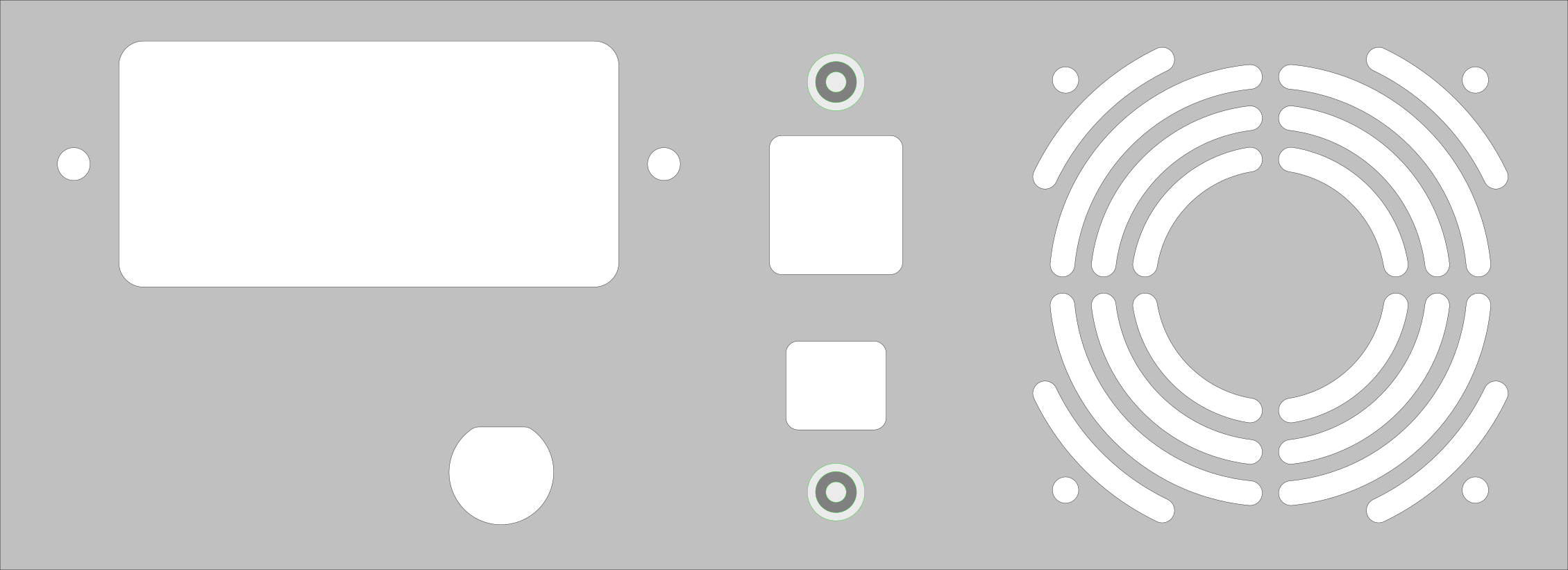Rear Panel
On the rear of the device are a few auxiliary connections, including AC power input, communications (Ethernet, USB) and an external trigger input.
Rear panel, as viewed from front (inside)
Power
A cutout is provided for an IEC mains filter/input module with switch and fuse – in this case, the cutout is sized to fit the Astrodyne TDI 084 series, specifically the 084.00301.00 with a 3A fuse.
It's very important that the IEC input module has a fuse built in; the only protection, if using the driver board's AC/DC module is a varistor to arrest surges.
Output from the filter (usually provided on spade terminals, or directly on wires) should then go via (sufficiently insulated) wires to a connector (CUI Devices TBP02P1W-381-03 or similar 3.81mm pluggable terminal block) to the driver board, which has a power module (CUI PSK-20D-12, Meanwell IRM-20-12, or similar) to produce the 12V from mains input.
Alternatively, this power module can be skipped in favor of an externally mounted power supply, in which case the mains input can be directly wired there; though take care to ensure that the case is still grounded. (The driver board has a 3.96mm JST-VH B2P-VH connector as a +12V input to accommodate external power supplies in place of a soldered power module, if that is desired instead.)
If an external supply is used, it should be capable of providing at least 1.6A at 12V with reasonably low noise.
IO Board
Ethernet and USB connectors are mounted on a small auxiliary circuit board, which mounts by means of screws on two 12mm M2.5 standoffs, and assumes a panel thickness of ~1.5mm. It serves as not much more than a simple breakout, converting from the 20 pin, 1.27mm ribbon cable coming from the controller board to these connectors.
On the USB connector, there exists basic transient filtering (via a TVS) and an I²C ADC to sense the VBus voltage. (There's no reason for a full blown ADC, but it was cheaper than an IO expander for just a single line.)
The Ethernet connector (Abracon ARJC07-111071A) is a vertical MagJack type, with the required magnetics integrated into the connector; therefore, the Ethernet side is not much more than a straight through connection, with some current limiting resistors for the connector's activity indicator LEDs.
Lastly, the board features an EEPROM (AT24CS32 type) for identification by software.
External Trigger
The last connector, near the bottom of the panel, is a cutout for a board mount BNC connector (TE 1-1634624-0)
on the driver board. This connector is used as an external trigger for various custom modes; it is relatively low impedance and drives directly an optoisolator.
No special treatment is required for the connector beyond the cutout, though it may feature a nut or other retention mechanism on the other side of the panel.
Miscellaneous
For cooling purposes, the remaining area on the right side of the panel has a cutout for a 60mm fan. This fan is automatically controlled by the processor board. It should be set up to suck air out of the chassis, to encourage more intake of fresh air at the front. This works in conjunction with the smaller fan on the driver board's heatsink.

